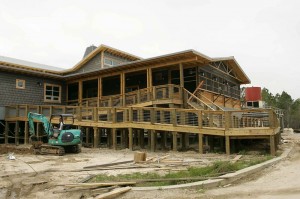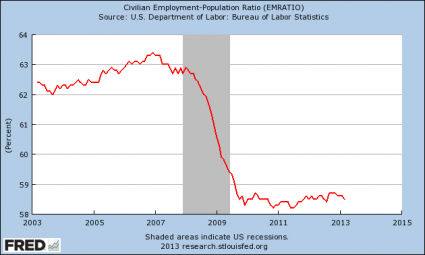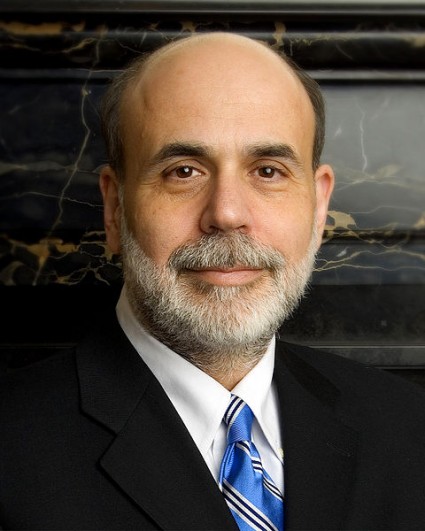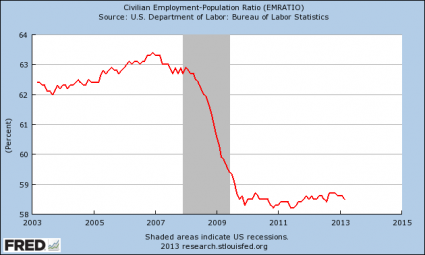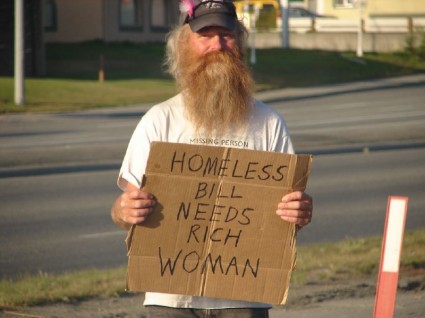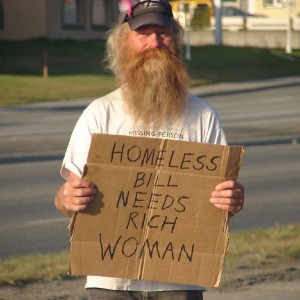 Do you actually believe that the employment numbers are getting better? Do you actually believe that there is a bright future ahead for American workers? If so, then you really need to read this article. The truth is that we are in the midst of the worst employment crisis since the Great Depression, and there has been absolutely no employment recovery. In fact, the percentage of working age Americans that are employed is just about exactly where it was during the darkest days of the last recession. But the mainstream media is not telling you this. The mainstream media is instead focusing on the fact that the official “unemployment rate” declined from 7.6% in June to 7.4% in July. That sounds like great news, but when you take a deeper look at the employment numbers some very disturbing trends emerge.
Do you actually believe that the employment numbers are getting better? Do you actually believe that there is a bright future ahead for American workers? If so, then you really need to read this article. The truth is that we are in the midst of the worst employment crisis since the Great Depression, and there has been absolutely no employment recovery. In fact, the percentage of working age Americans that are employed is just about exactly where it was during the darkest days of the last recession. But the mainstream media is not telling you this. The mainstream media is instead focusing on the fact that the official “unemployment rate” declined from 7.6% in June to 7.4% in July. That sounds like great news, but when you take a deeper look at the employment numbers some very disturbing trends emerge.
Over the past several years, almost the entire decline in the unemployment rate can be accounted for by people “leaving the workforce”. The “unemployment rate” has not been going down because people are actually getting jobs. Rather, the “unemployment rate” has been going down because the government has been pretending that millions upon millions of American workers simply do not want jobs anymore. This is extremely misleading.
We are being told that 162,000 jobs were created in July. Okay, so that is just barely enough to keep up with population growth, and most of the jobs that were created last month were part-time jobs.
Meanwhile, the jobs numbers for the two previous months were both revised down…
The change in total nonfarm payroll employment for May was revised from +195,000 to +176,000, and the change for June was revised from +195,000 to +188,000. With these revisions, employment gains in May and June combined were 26,000 less than previously reported.
Will this month eventually be revised down too?
When it comes to measuring employment in the United States, I believe that a much more accurate measurement than the highly manipulated “unemployment rate” is the civilian employment-population ratio. This ratio tells us what percentage of working age Americans actually have a job.
Just prior to the last recession, about 63 percent of all working age Americans had a job. During the recession, that number plunged dramatically and ultimately fell below 59 percent, and it has stayed below 59 percent for 47 months in a row…
This is the first time in the post-World War II era that the employment-population ratio has not bounced back after a recession.
So there has not been an employment recovery. Anyone that tells you that there has been an employment recovery is lying to you.
Since the end of 2009, we have been treading water at best. But during that time, another disturbing trend has emerged. Good paying full-time jobs are rapidly being replaced by low paying part-time jobs.
And this trend has definitely accelerated this year. If you can believe it, an astounding 76.7 percent of the jobs that have been “created” in 2013 have been part-time jobs.
As I wrote about last month, the employment landscape in this country is fundamentally changing. At this point, the number one employer in this country is Wal-Mart, and the number two employer in this country is a temp agency (Kelly Services).
This is a huge reason why the middle class is dying. You simply can’t raise a family on a part-time income.
Our young adults are being hit particularly hard. According to Gallup, the percentage of working age Americans under the age of 30 with a job fell from 47.0% in June 2012 to 43.6% in June 2013…
Fewer Americans aged 18 to 29 worked full time for an employer in June 2013 (43.6%) than did so in June 2012 (47.0%), according to Gallup’s Payroll to Population employment rate. The P2P rate for young adults is also down from 45.8% in June 2011 and 46.3% in June 2010.
When our young people get out of school and enter the real world, they are finding that “good jobs” are few and far between. But unless our young people can find “breadwinner jobs”, they are not going to be able to get married, buy homes and raise families.
A lot of young people are doing their best, but things are really tough out there right now. The lack of good jobs is the primary reason why families that have a head of household under the age of 30 have a poverty rate of 37 percent.
A lot of young adults are coping with this employment crisis by moving back in with their parents. According to one recent study, 36 percent of all young adults in the 18 to 31 age bracket are currently living with their folks.
Are you starting to understand that our system is broken?
The quality of jobs in this country continues to steadily decline. Just consider the following numbers from one of my previous articles…
-The number of part-time workers in the United States has just hit a brand new all-time high, but the number of full-time workers is still nearly 6 million below the old record that was set back in 2007.
-In America today, only 47 percent of adults have a full-time job.
-At this point, one out of every four American workers has a job that pays $10 an hour or less.
-An astounding 53 percent of all American workers make less than $30,000 a year.
And as I mentioned yesterday, until we have a jobs recovery there will be no housing recovery no matter how much the Federal Reserve tries to manipulate the system.
The mainstream media continues to insist that “things are looking up” for the housing market, and yet the home ownership rate in the United States is the lowest that it has been in 18 years.
In order for the middle class to thrive, people have got to be able to get good jobs and people have got to be able to buy homes.
Instead, the percentage of good jobs in our economy continues to shrink, the level of home ownership continues to decline, and less than half of all Americans now consider themselves to be middle class.
The next wave of the economic crisis has not even hit us yet, but we continue to see poverty rates soar all over the nation. In fact, just this week there was an article about the tent cities that are starting to pop up all over New Jersey…
Tent cities have popped up across New Jersey including the state’s poorest city.
Meg Baker chased the story of Camden’s tent city. Residing off Route 38 at Wilson Boulevard under an overpass, through woods and down a path of trash lays a community of people living in tents. This particular community was relocated from Federal Street and it’s inhabited by an array of people: addicts, people who have fallen on hard times and some with mental illness.
Baker took a tour of this run down community and the pictures show just how heart-wrenching this situation really is. Among the homes are decomposing food, broken furniture, and feral cats.
This is supposed to be “the economic recovery”.
If things were going to get “better” it should have happened by now.
But things didn’t get better, and now the next wave of the economic crisis is rapidly approaching.
As I tried to explain the other day, the most important number in our economy is the yield on 10 year U.S. Treasuries. As that number goes up, interest rates all over our economic system go up. And much higher interest rates would be absolutely devastating for our economy.
Unfortunately, many analysts now believe that interest rates are going to go much, much higher than they are right now. Just check out this excerpt from a recent CNBC article…
The Federal Reserve will lose control of interest rates as the “great rotation” out of bonds into equities takes off in full force, according to one market watcher, who sees U.S. 10-year Treasury yields hitting 5-6 percent in the next 18-24 months.
“It is our opinion that interest rates have begun their assent, that the Fed will eventually lose control of interest rates. The yield curve will first steepen and then will shift, moving rates significantly higher,” said Mike Crofton, President and CEO, Philadelphia Trust Company told CNBC on Wednesday.
If interest rates do go that high, our economy simply will not be able to handle that. It would cripple the finances of state and local governments all over the nation, it would absolutely crush the housing market, and it would cause a derivatives crisis unlike anything that we have ever seen before.
The smart money knows that rising interest rates spell big trouble and they are already pulling their money out of the market as a Bloomberg article recently detailed…
Private-equity managers from Fortress Investment Group LLC (FIG) to Blackstone Group LP (BX), which made billions by buying low and selling high, say now is the time to exit investments as stocks rally and interest rates start to rise.
And Apollo Global Management LLC Chief Executive Officer Leon Black said the following back in April…
“It’s almost biblical: there is a time to reap and there’s a time to sow,” Apollo (APO)’s Black said at a conference in April. “We think it’s a fabulous environment to be selling. We’re selling everything that’s not nailed down in our portfolio.”
The smart money is getting out while the getting is good.
They know that a storm is coming.
They know what higher interest rates will do to the economy.
As bad as the employment picture is right now, this is NOTHING compared to what is coming.
This is about as good as things are going to get. It is all downhill from here.
So enjoy this false bubble of pseudo-prosperity while you still can.
When the next great wave of the economic crisis strikes, millions upon millions of Americans are going to lose their jobs and the official unemployment rate is going to soar well up into the double digits.

